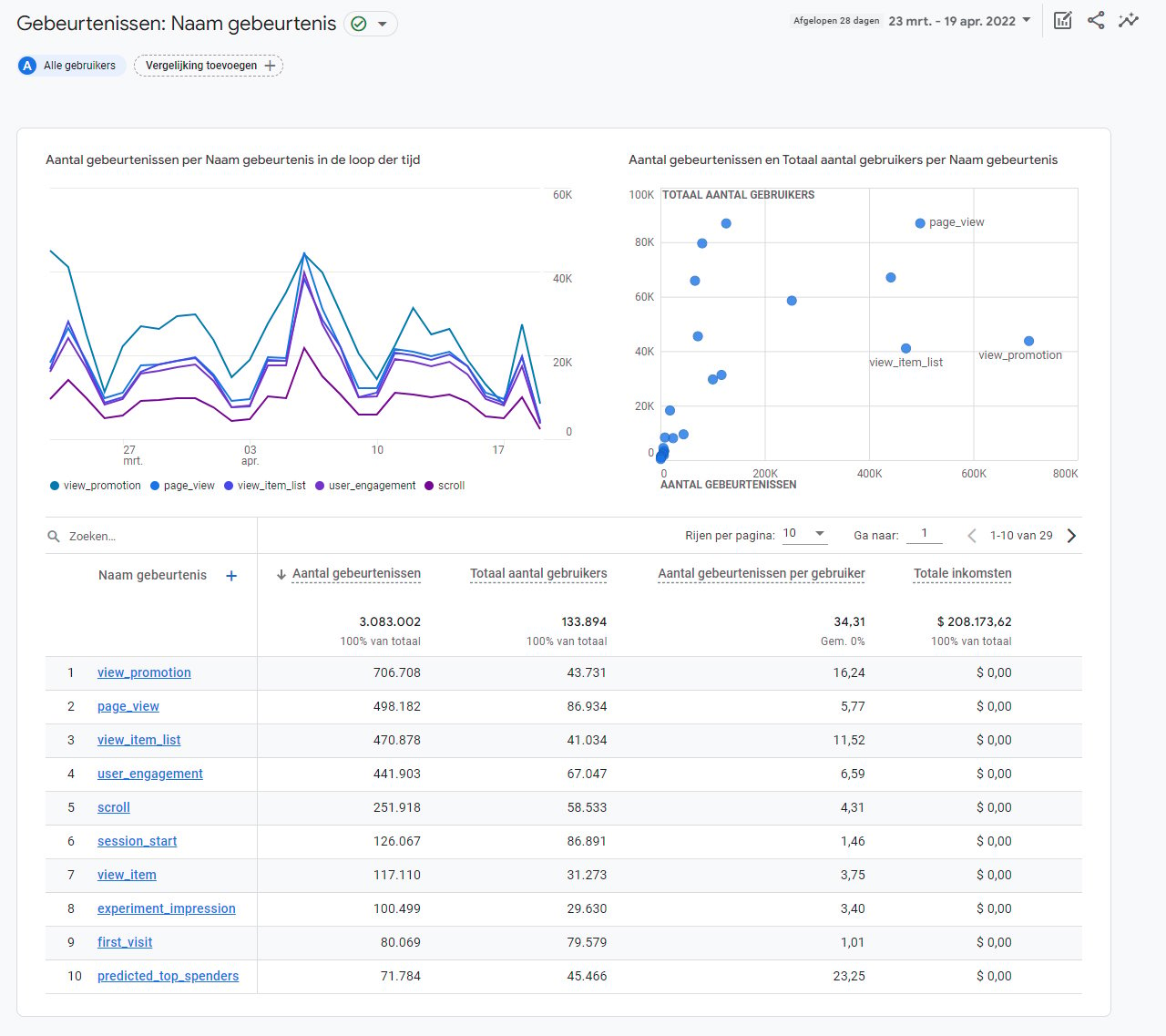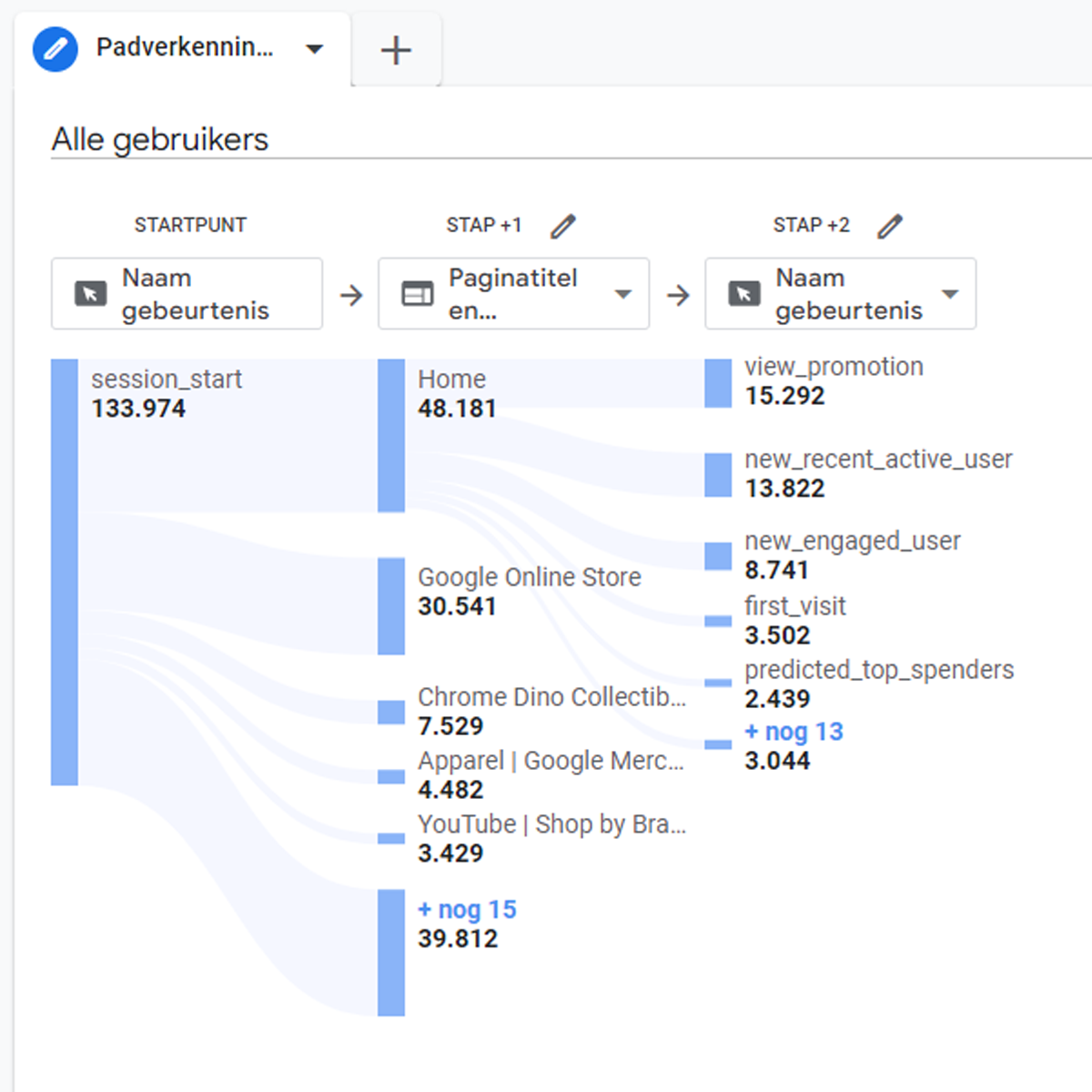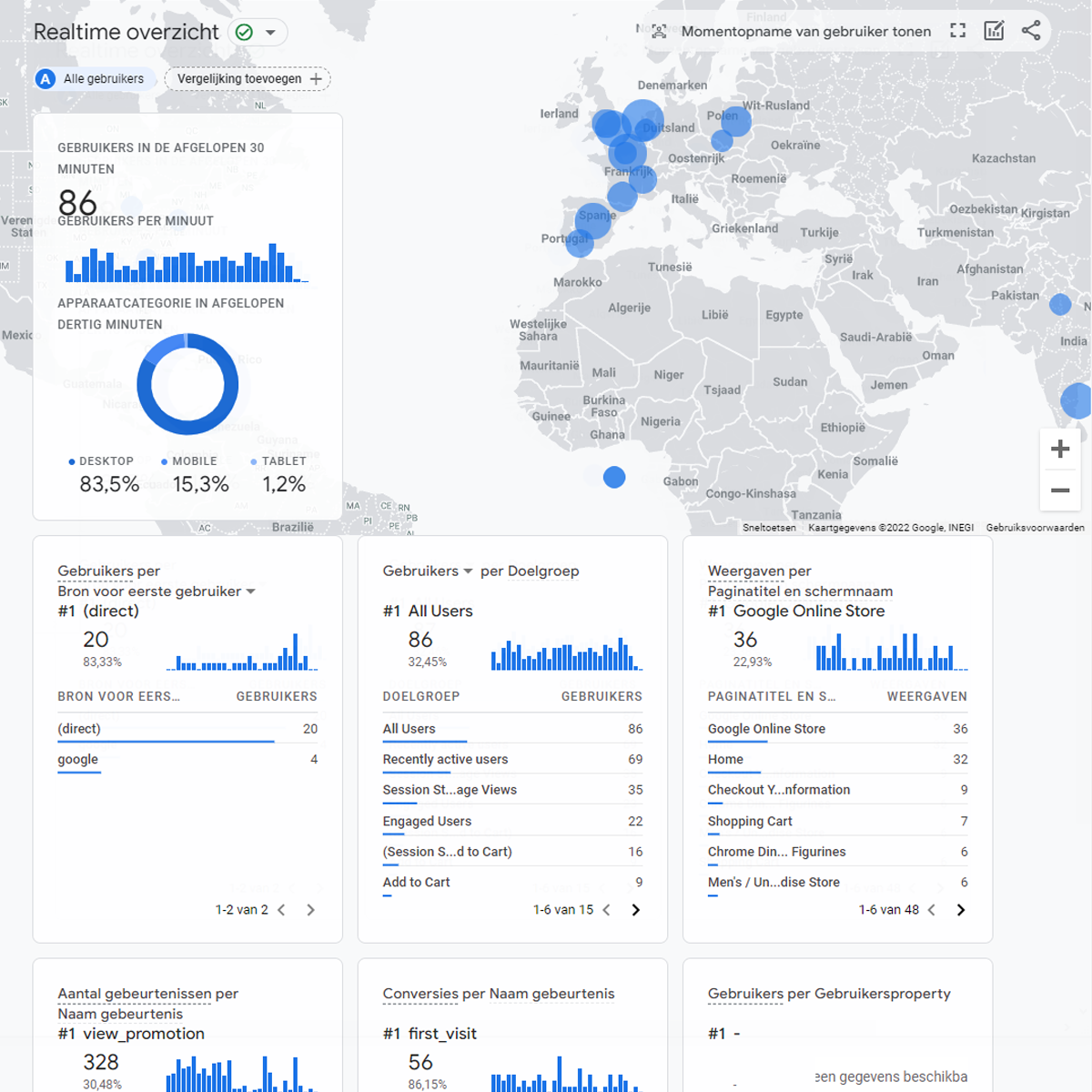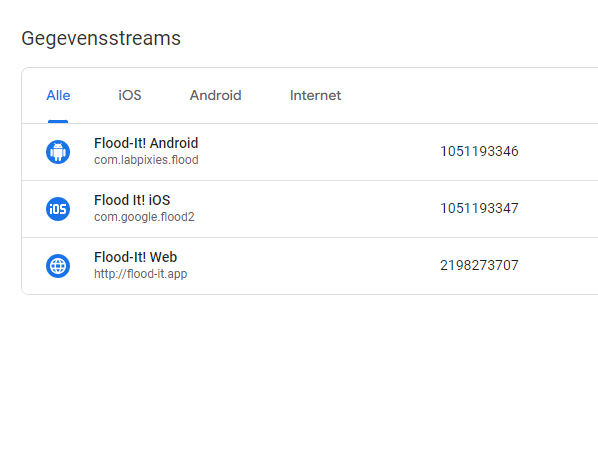GA4: The 4 most important changes

From July 1, 2023, Google Universal Analytics (UA) will no longer exist, and UA has been migrated to GA4. In this article, you'll find an overview of the 4 key changes.
The previous version of Google Analytics, also known as Universal Analytics (UA), has been discontinued as of July 1, 2023. This meant that many marketers and website administrators had to quickly find a new solution for their website statistics. Fortunately, Google had a promising successor ready for this situation: Google Analytics 4, or GA4. In this article, we will explain the major differences between Universal Analytics (UA) and GA4.
What are the major differences?
GA4 was launched by Google in October 2020 and is fundamentally different. The new version not only operates in a different way technically but also changes the way Google looks at statistics. We observe that most marketers or website administrators need some time to get used to reading and interpreting the data within GA4.
1. New data model
Google has restructured the data model of GA4, allowing for more data collection and increased accuracy of the data. As a result, GA4 now collects data solely from events and no longer relies on page views. Previously, page views were the primary measurement in UA, but now they are just one part of all interactions a user has with your website.
Visitor information is now linked to a series of events based on their interactions during the visit. The type of event and subsequent interactions by the visitor contribute to an understanding of engagement on the website or app. This shift means that analyzing statistics will be different than before, and the data will be interpreted in a new way.
With this new event-based data model, Google ensures that many other events are now easier to measure. GA4 now provides out-of-the-box capabilities to measure the following events:
- Scrolling (90% of the page)
- Outbound links
- Site Search
- Video engagement (YouTube)
- File downloads
Up until now, we always manually created these events within Google Tag Manager or within the source code of the website. This is no longer necessary.
However, this new approach means that old and historical information from the existing UA implementation can no longer be carried over. The statistics will be rebuilt in GA4.

2. New reports and structure
Google takes a different approach to data interpretation with the structure of GA4. In UA, we have become accustomed to categorizing all reports under Realtime, Audience, Acquisition, Behavior, and Conversions. This has been the way to measure the success of a website and examine visitor behavior.
With GA4, Google takes a different path. The new reports in GA4 are now categorized as Realtime, Acquisition, Engagement, Monetization, and Retention. In addition to this classification, there are two separate groups: Demographics and Technology. This categorization changes the way we look at the data. The focus is shifted towards engagement, especially the level of interaction from the visitor. With the new data model, we now have more information about the visitor and the level of interactions on the website. This provides us with better insights into overall "Engagement" and less emphasis on page-specific behavior and events on the page. As a result, we gain a better understanding of the customer journey on the website.
The Realtime data is now much more extensive. With GA4, it is possible to view the past 30 minutes, whereas with UA, this was only a few minutes. Additionally, the data is again faster and more accurate due to the modified data model. This makes the Realtime overview the ideal dashboard during the launch of a campaign or at an expected peak moment in visitors.
Within these categories, the number of reports has been reduced compared to UA. However, through "Explorations" under the "Discover" item, we see extensive possibilities for deeper analysis of the data. Within this, examples have already been built, such as exploring your funnels or the path someone has taken on the website. Additionally, GA4 supports exporting to Google BigQuery for Big Data Analysts to delve even deeper into the data.


3. Privacy by design
With the recent criticism in Europe regarding Google Analytics and privacy concerns, we observe an increasing importance placed on privacy. Third-party cookies are becoming less acceptable, and both consumers and organizations are becoming more conscious of this trend. GA4 is designed with privacy as a fundamental principle (privacy by design), meaning that all data sent to GA4 is automatically anonymized. Anonymization has been a fixed standard in our implementation since the introduction of the GDPR. With GA4, Google has adopted this as a consistent starting point as well. GA4 has departed from the session-based data model that UA has applied for years. As described earlier, GA4 has transitioned to an event-based data model, allowing for better privacy protection and the collection of more valuable information about visitor behavior.
4. Websites & apps
GA4 goes beyond managing your website statistics. Many web administrators or marketers used UA for the website and Google Firebase Analytics for native apps (iOS or Android). These statistics were always separate and were not consolidated into a single customer view of your target audience. This is now possible with GA4. GA4 has the ability to create a property for both your website and your apps, providing a more complete picture of your audience's behavior across your website and apps. Purchases through the app or website are combined, while still providing insight into the channel through which the sale occurred. GA4 aligns better with the omni-channel strategies that organizations and businesses are currently adopting and pursuing.

Advice needed?
Do you have information about using GA4 or want to learn more about utilizing statistics for your website or digital platform? Feel free to contact me at marc.gutlich@humandigital.nl or 085 - 0020 678.